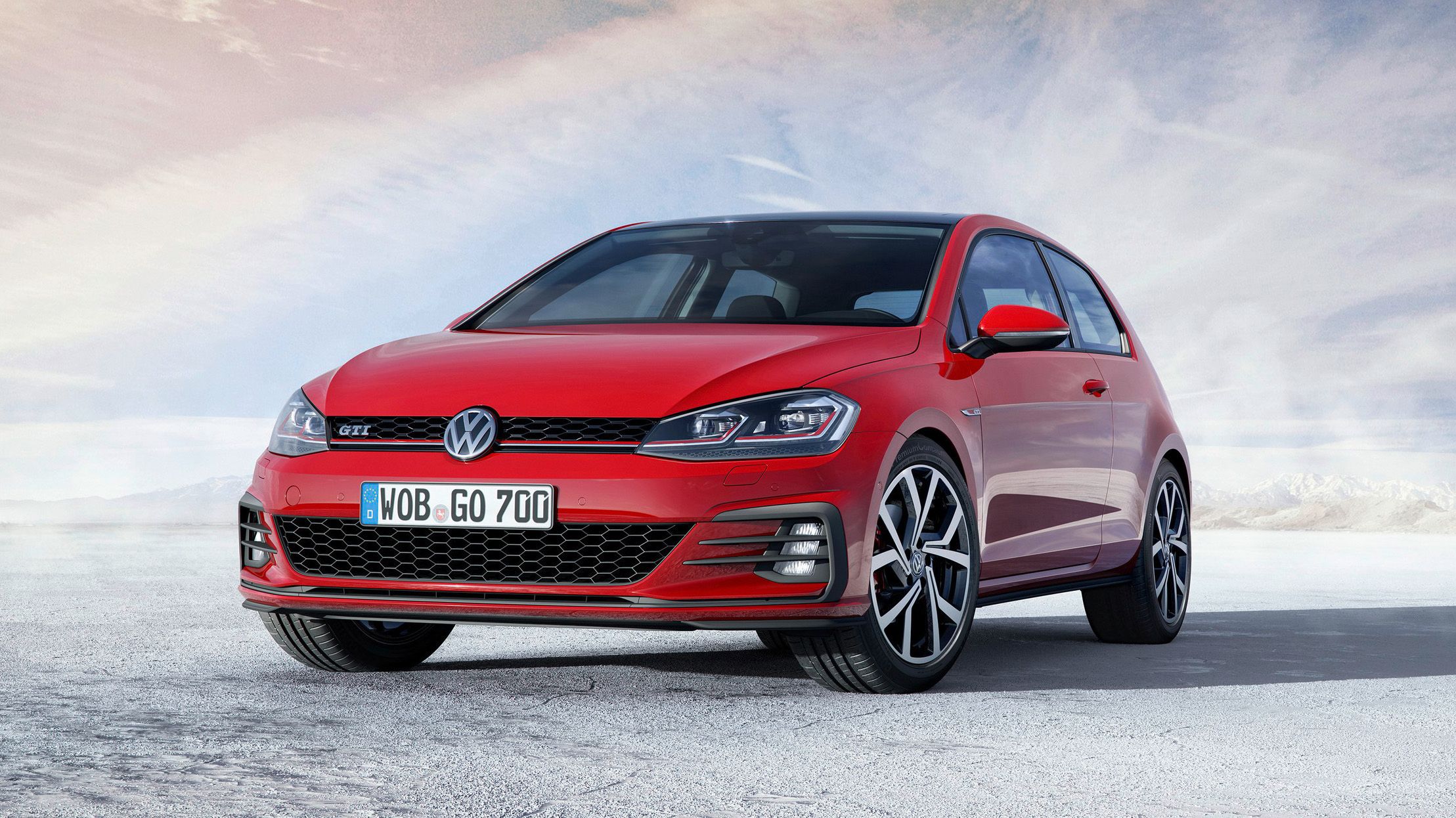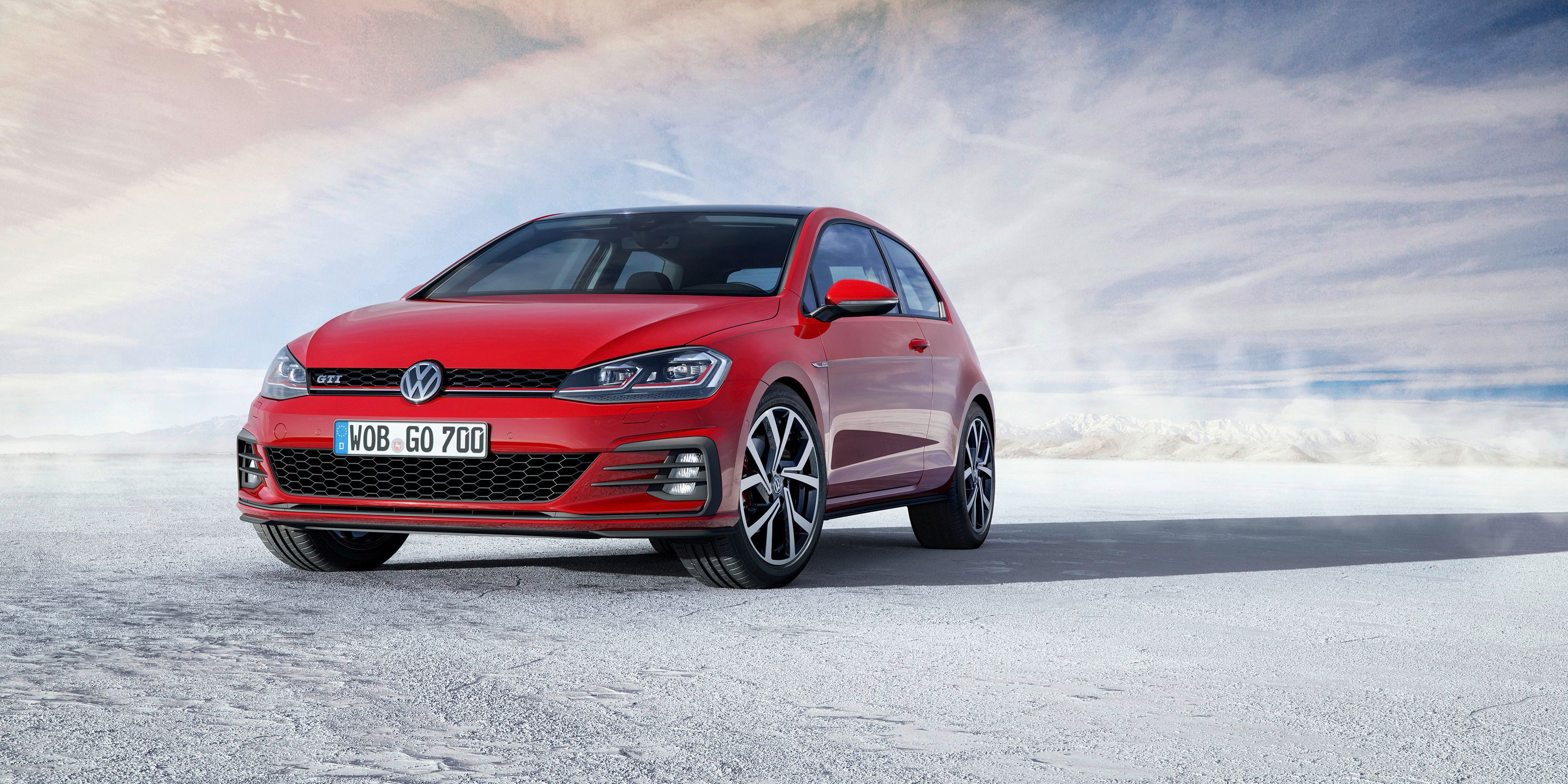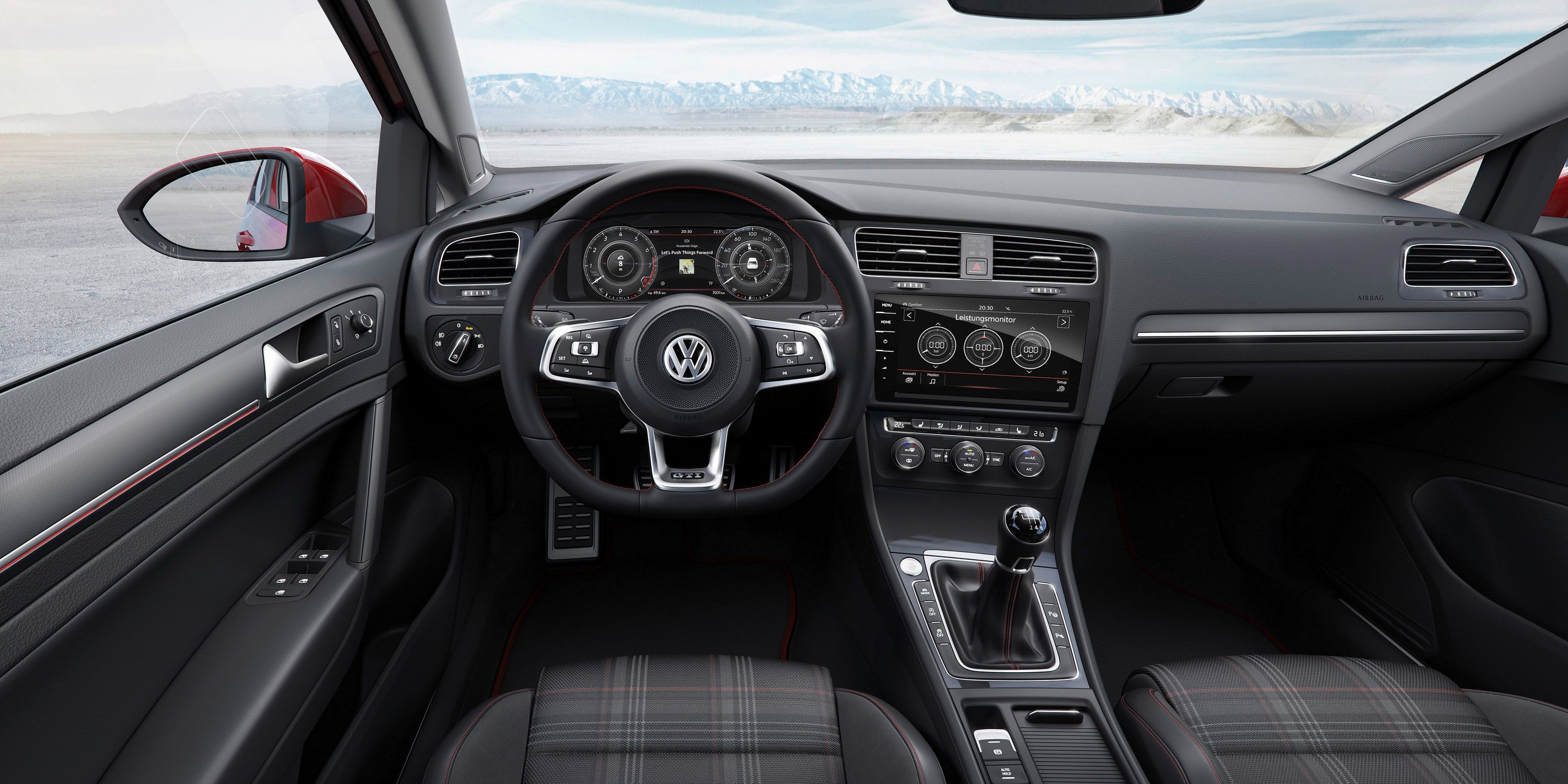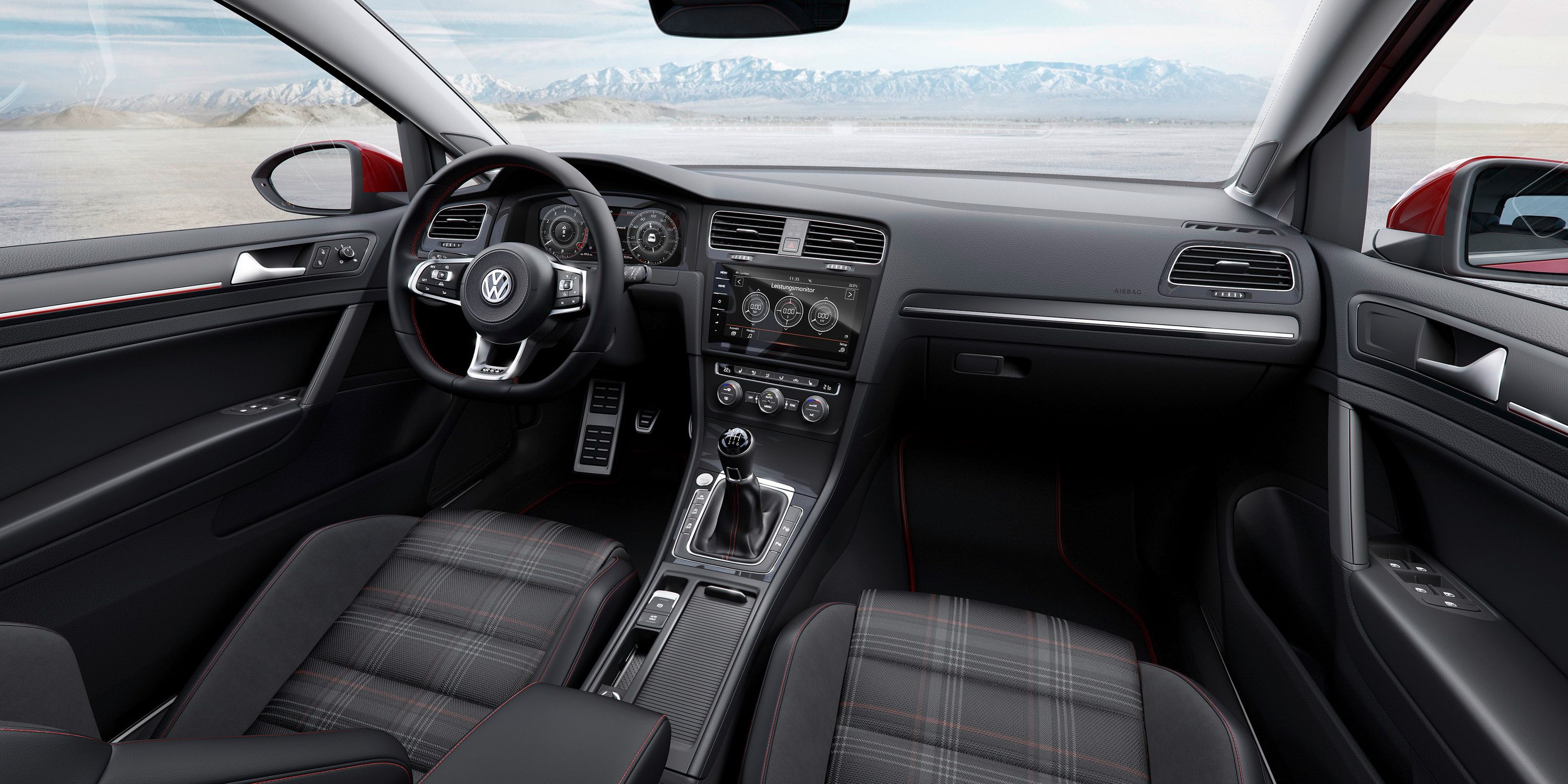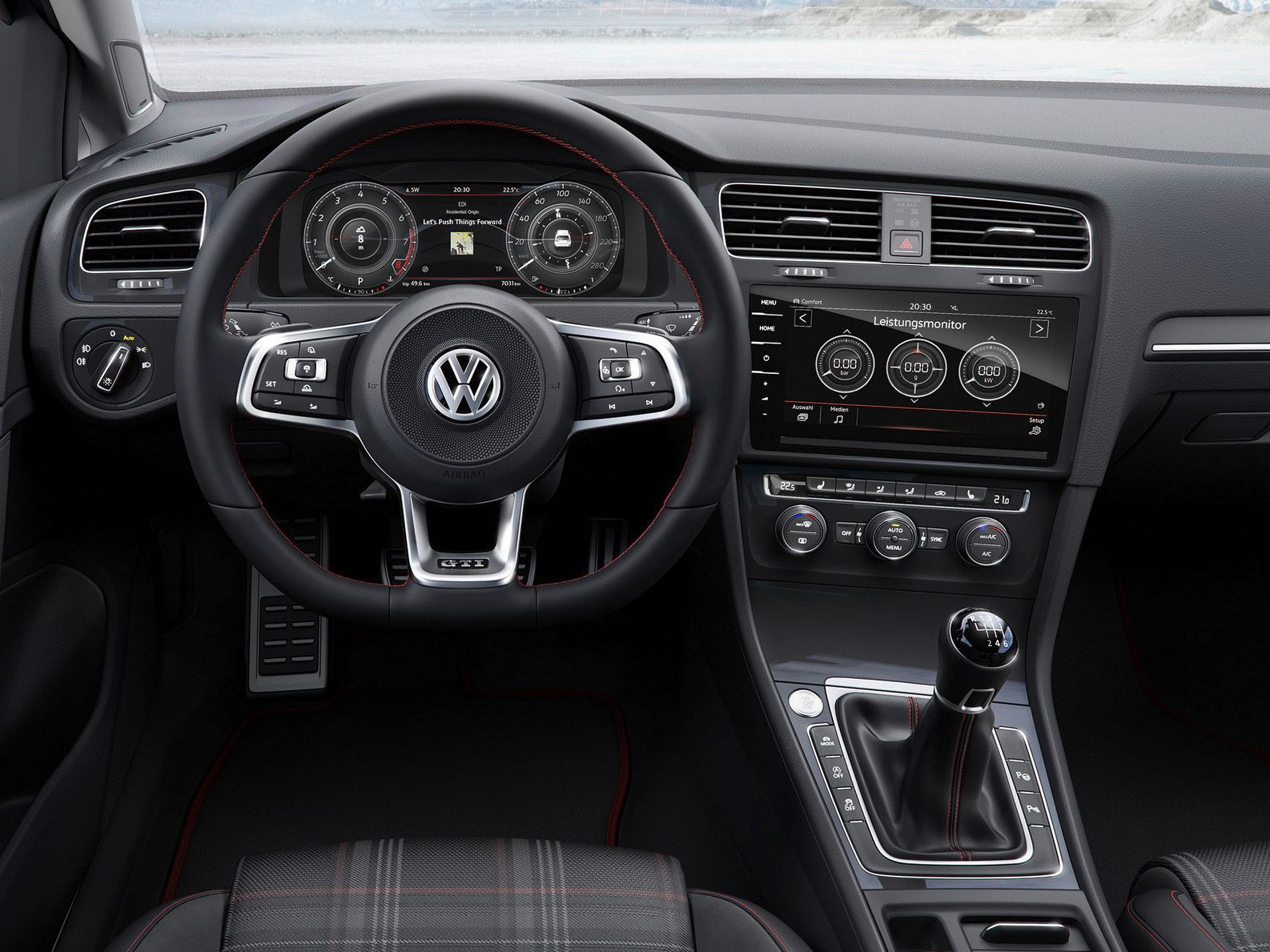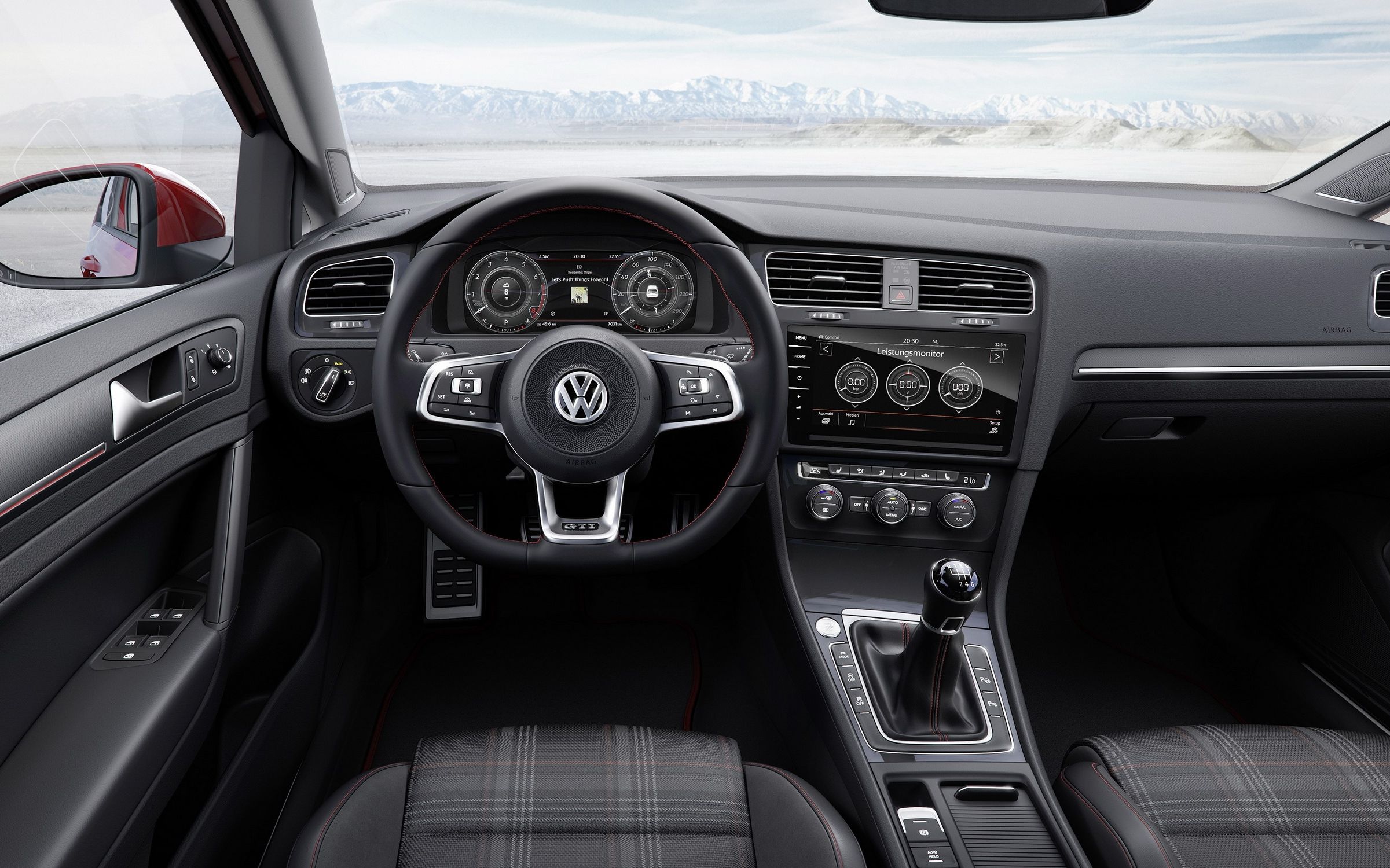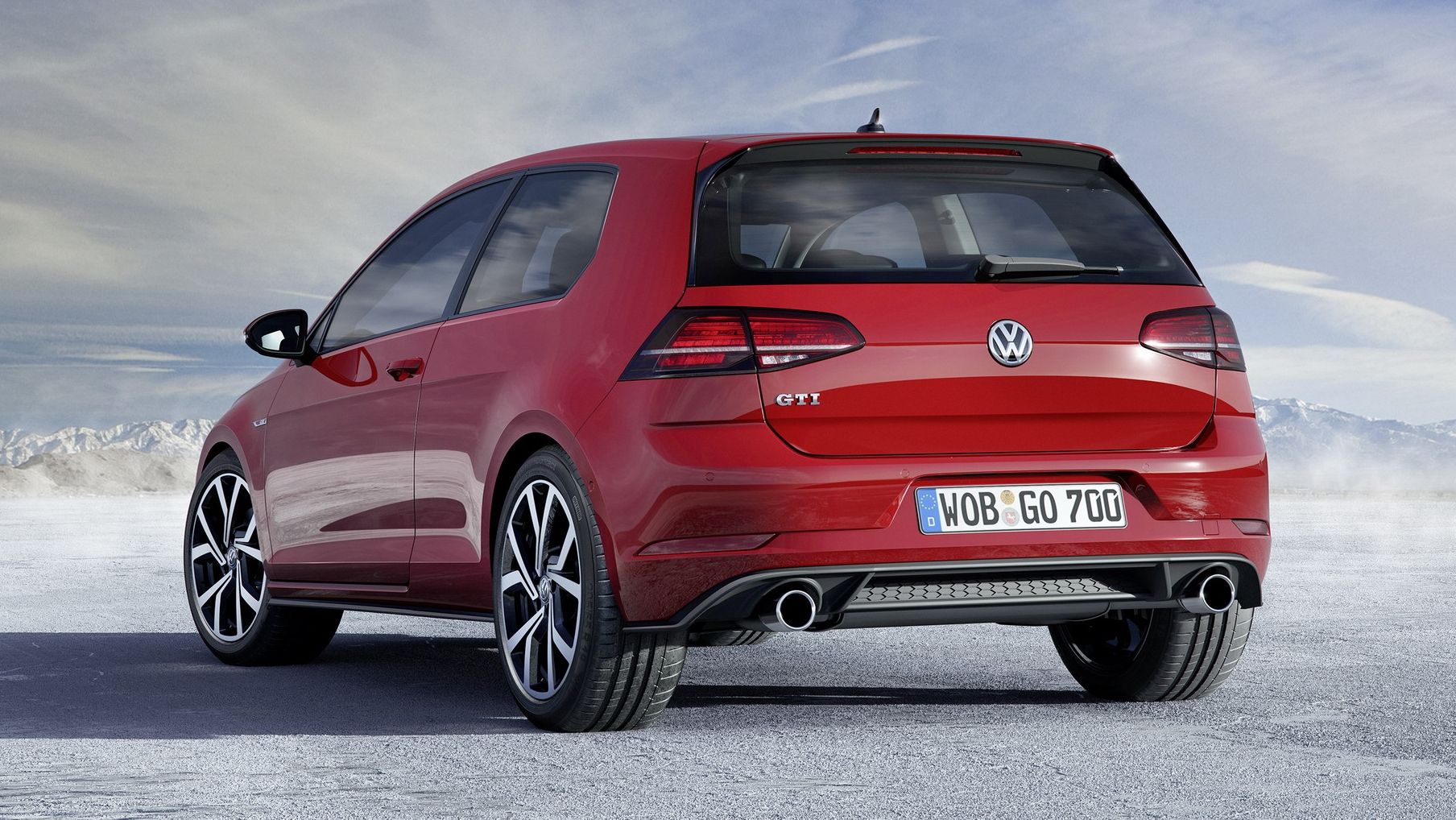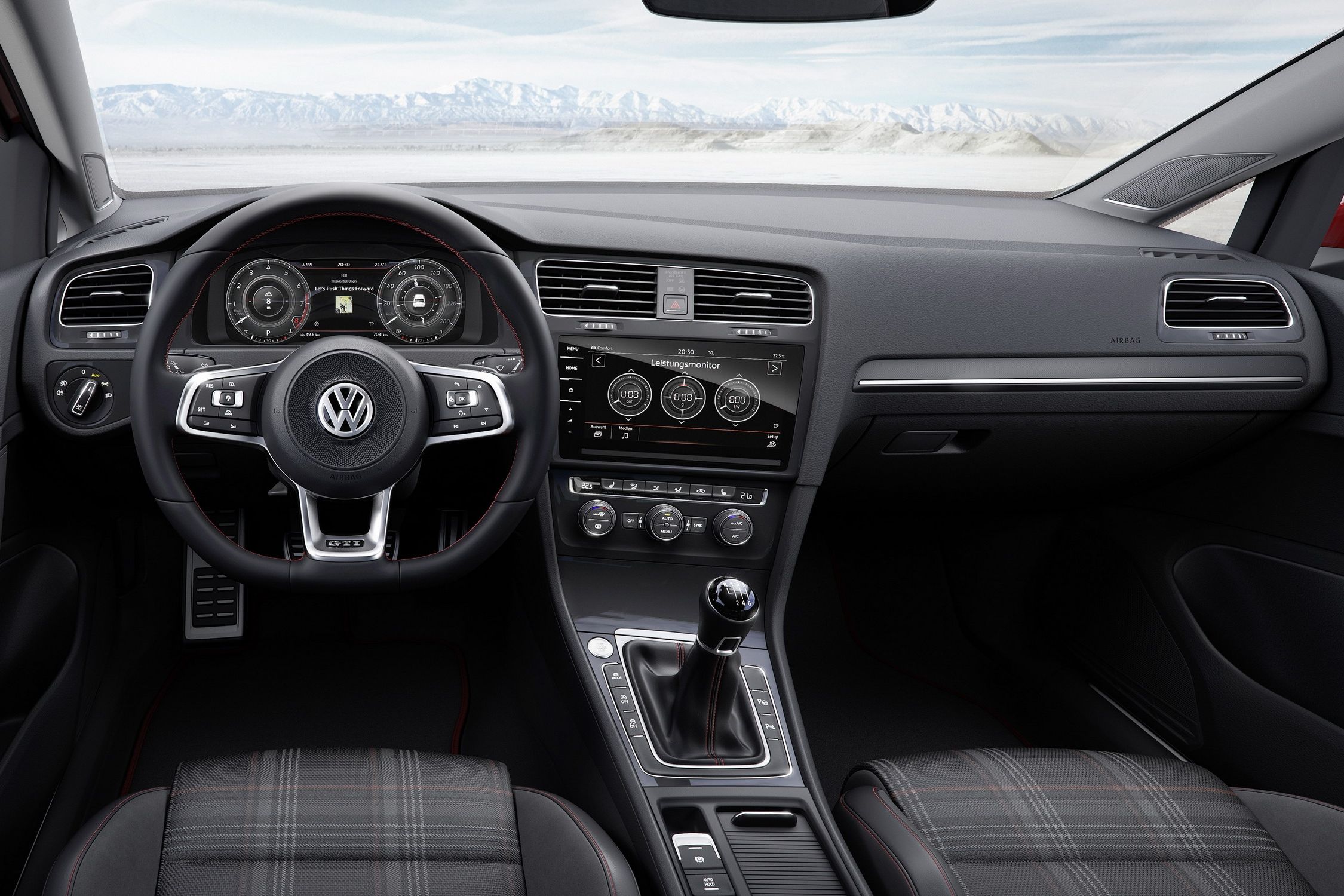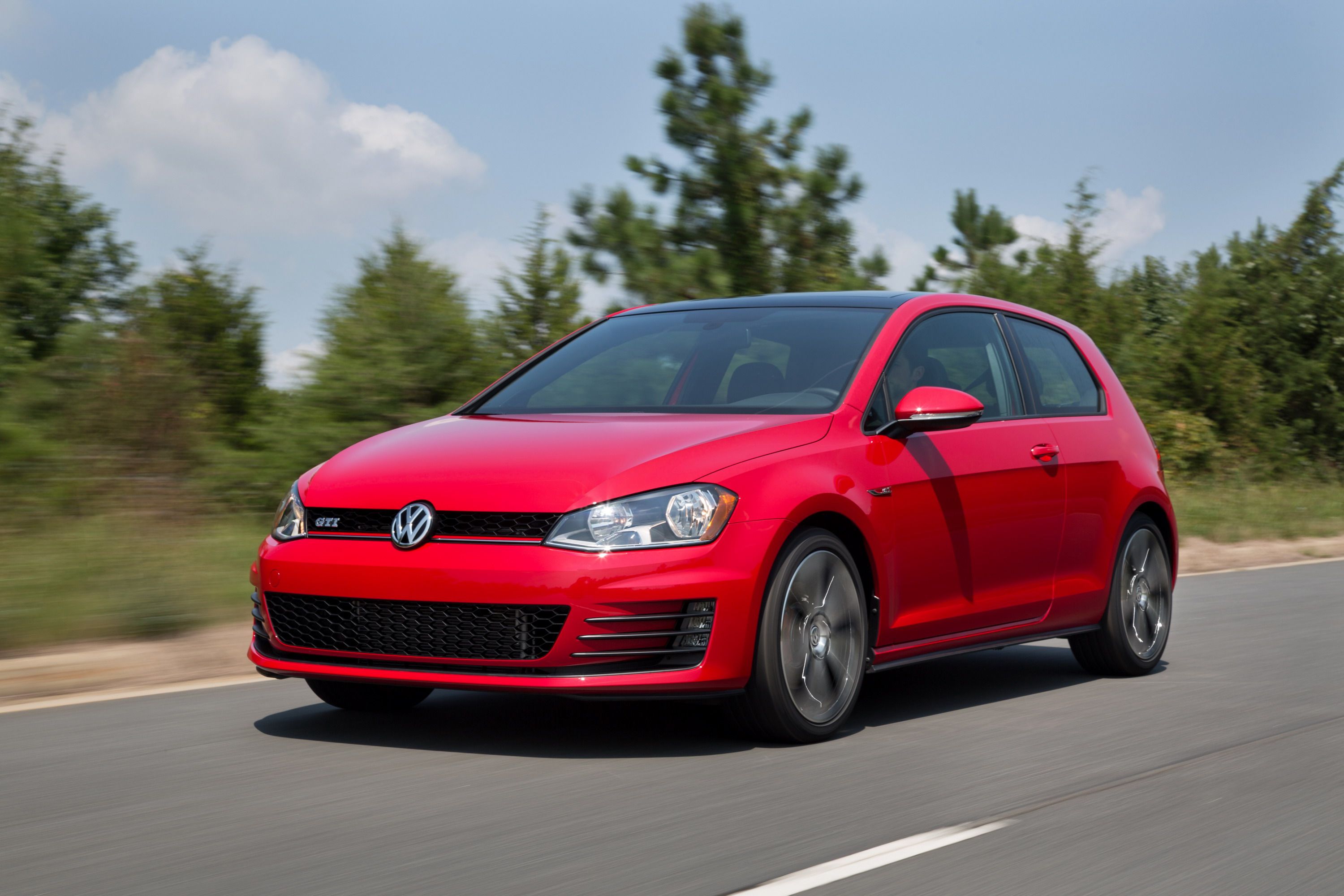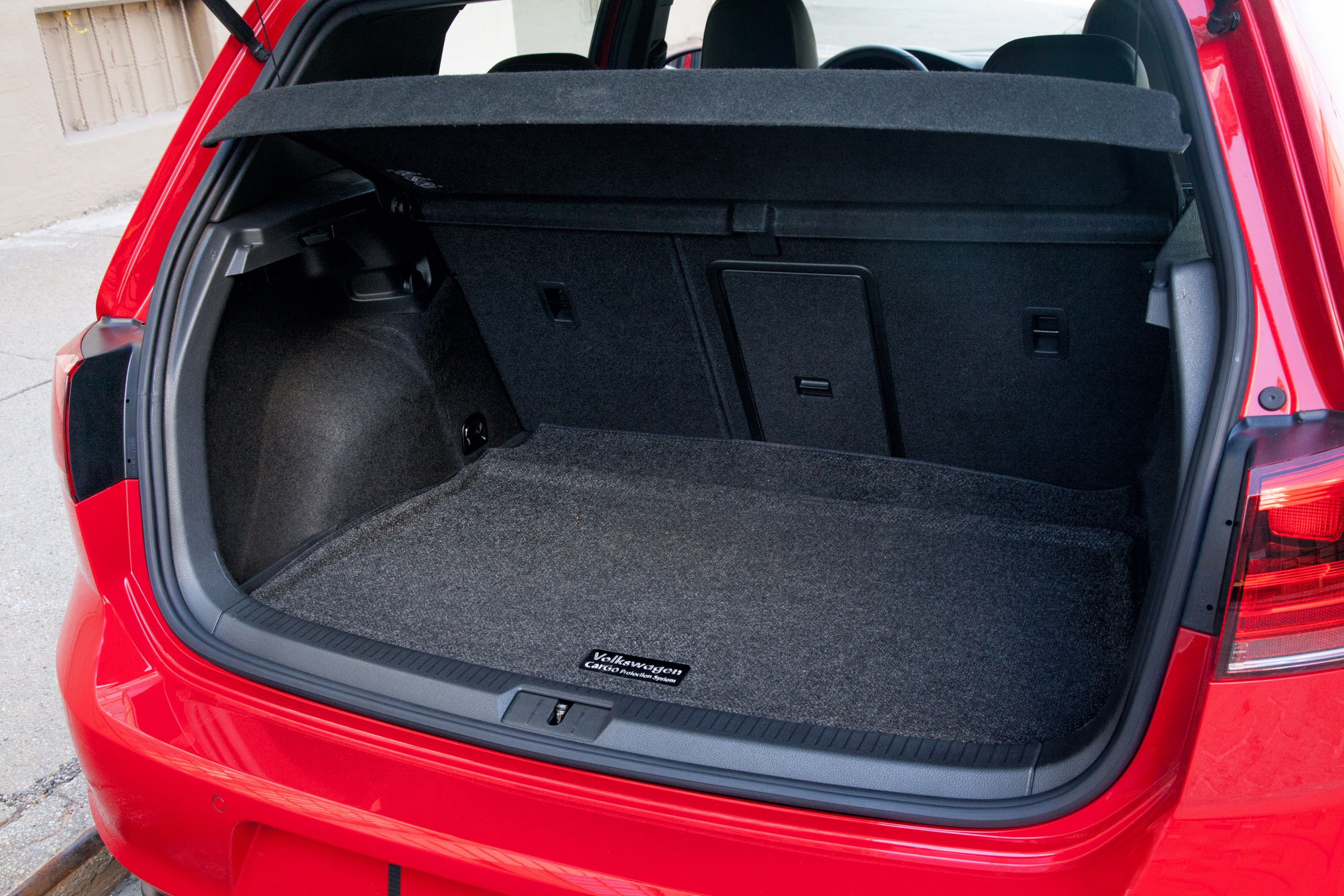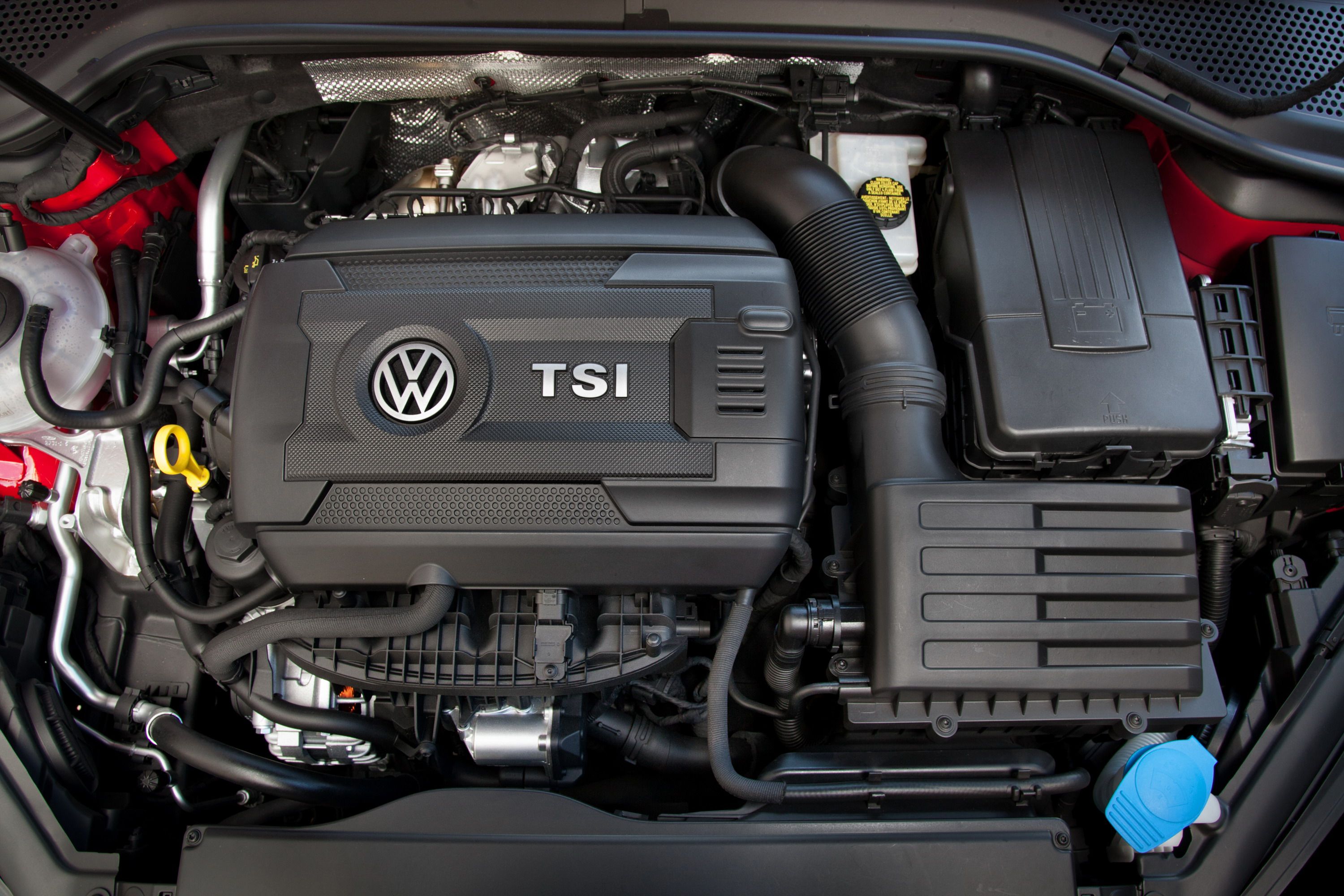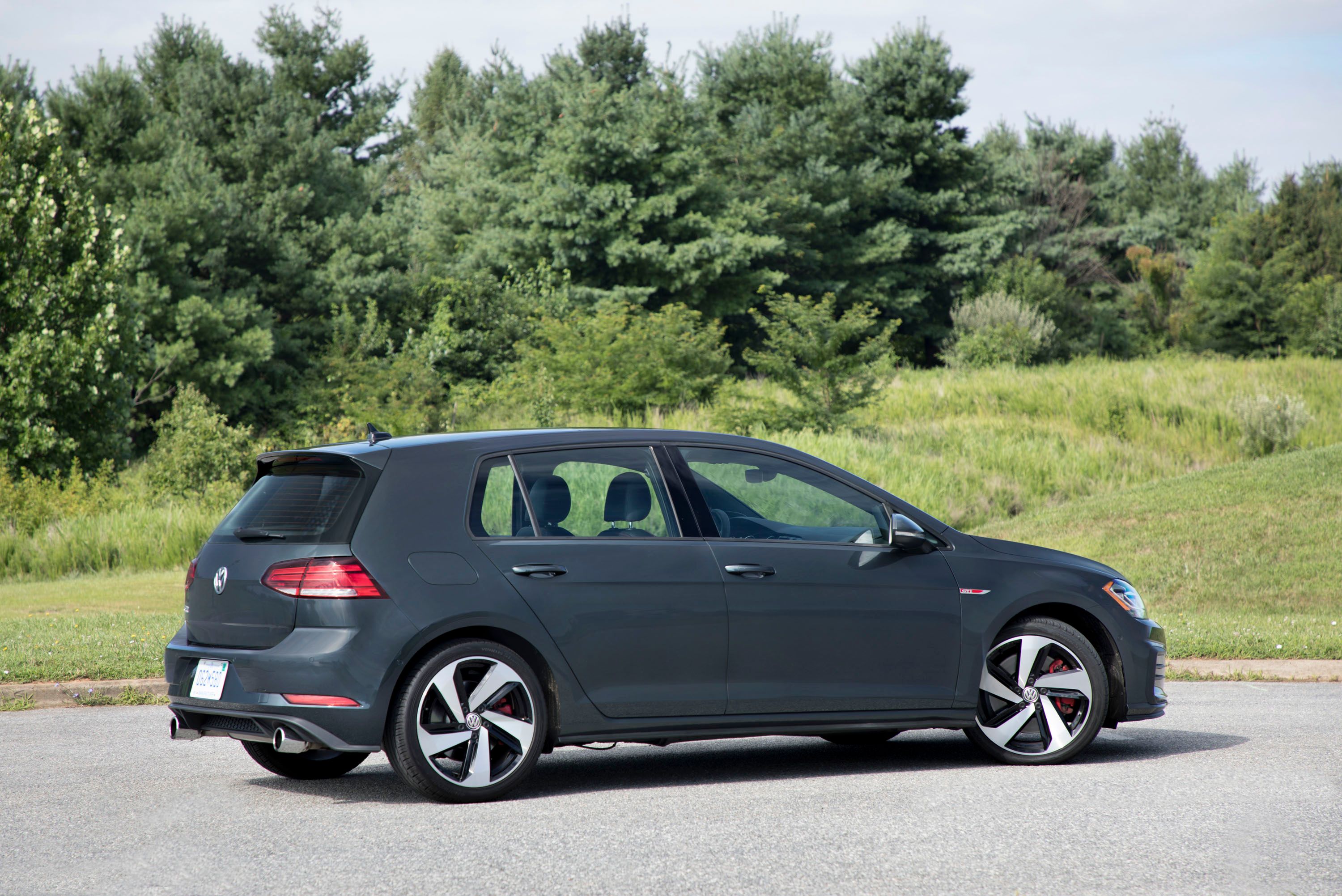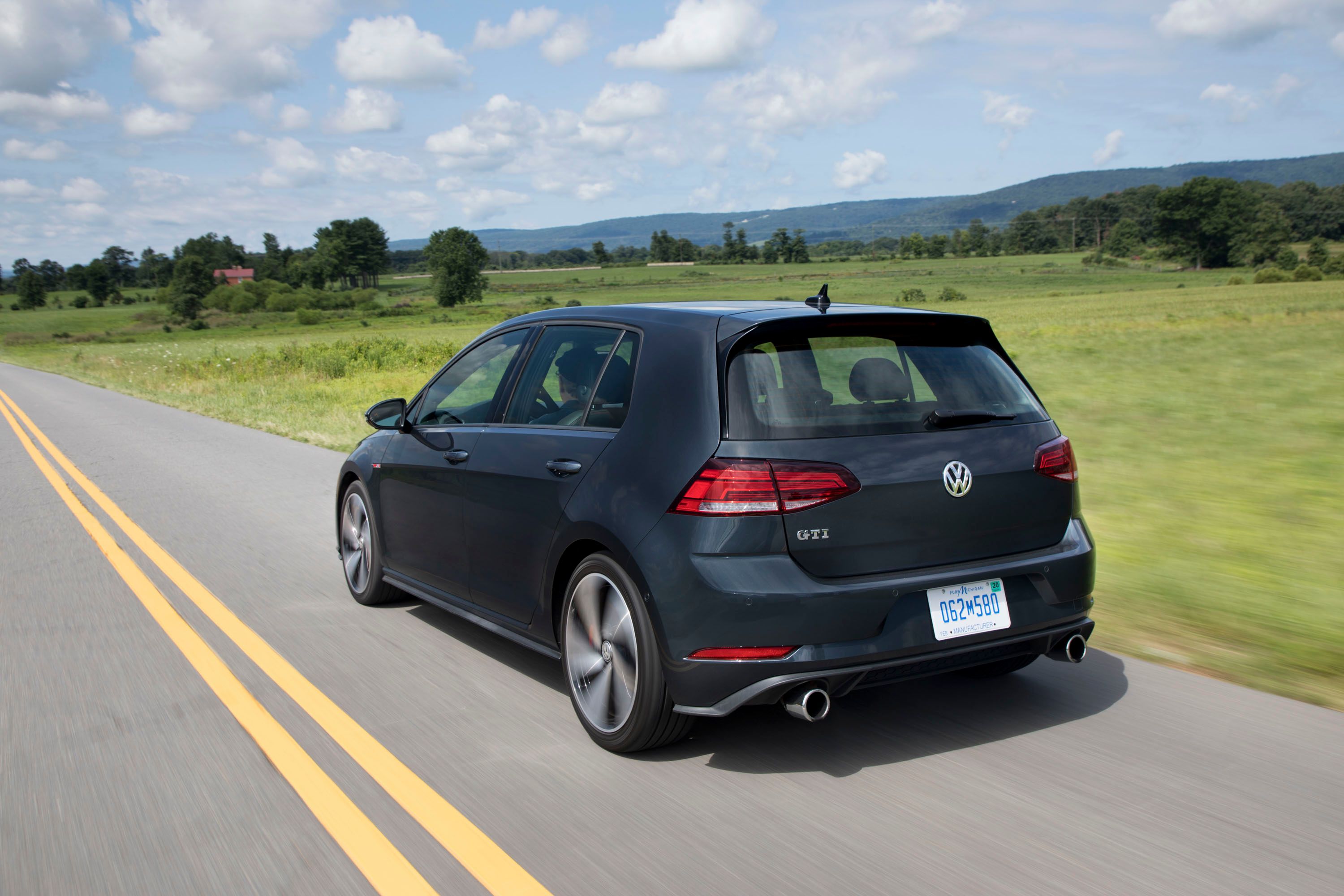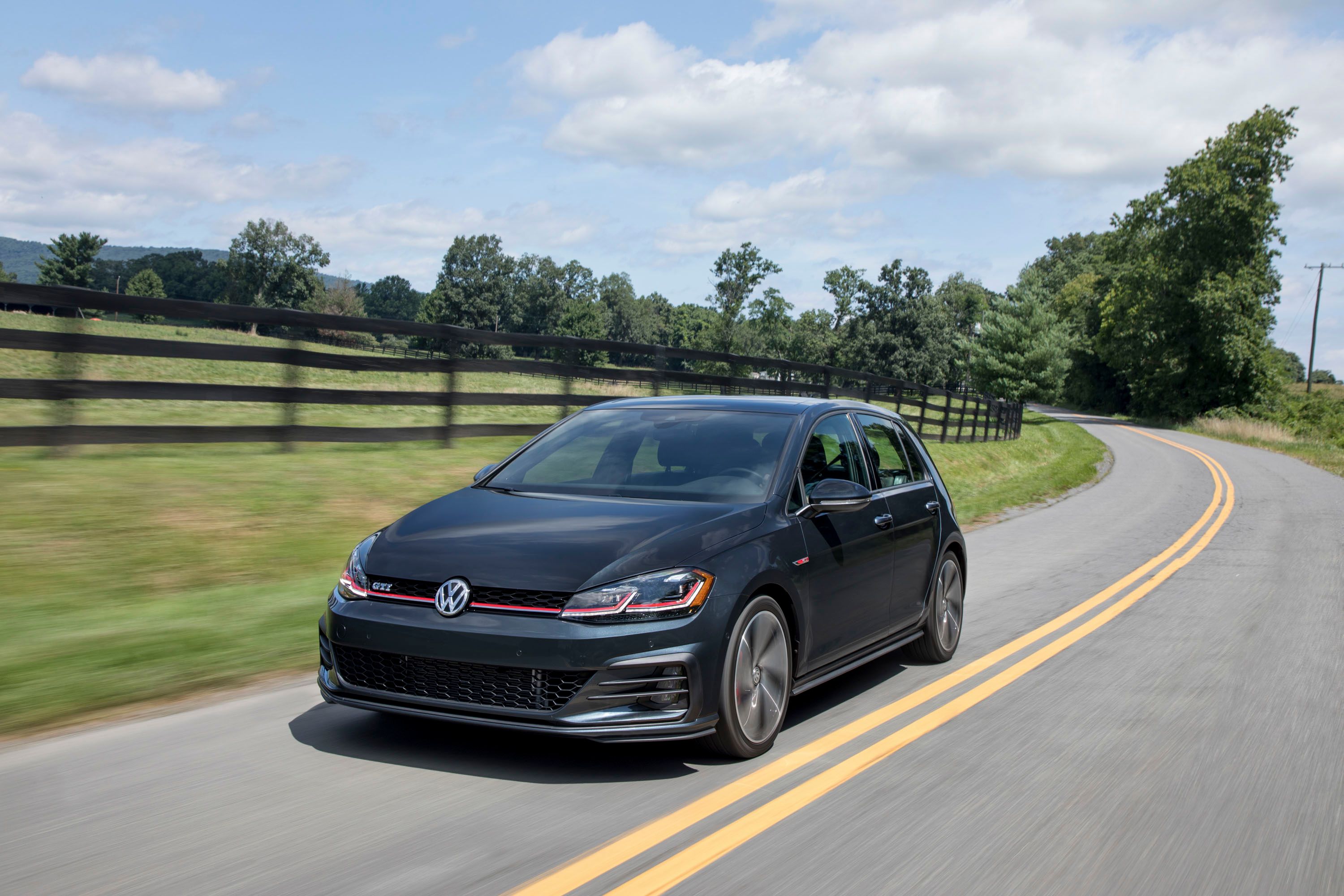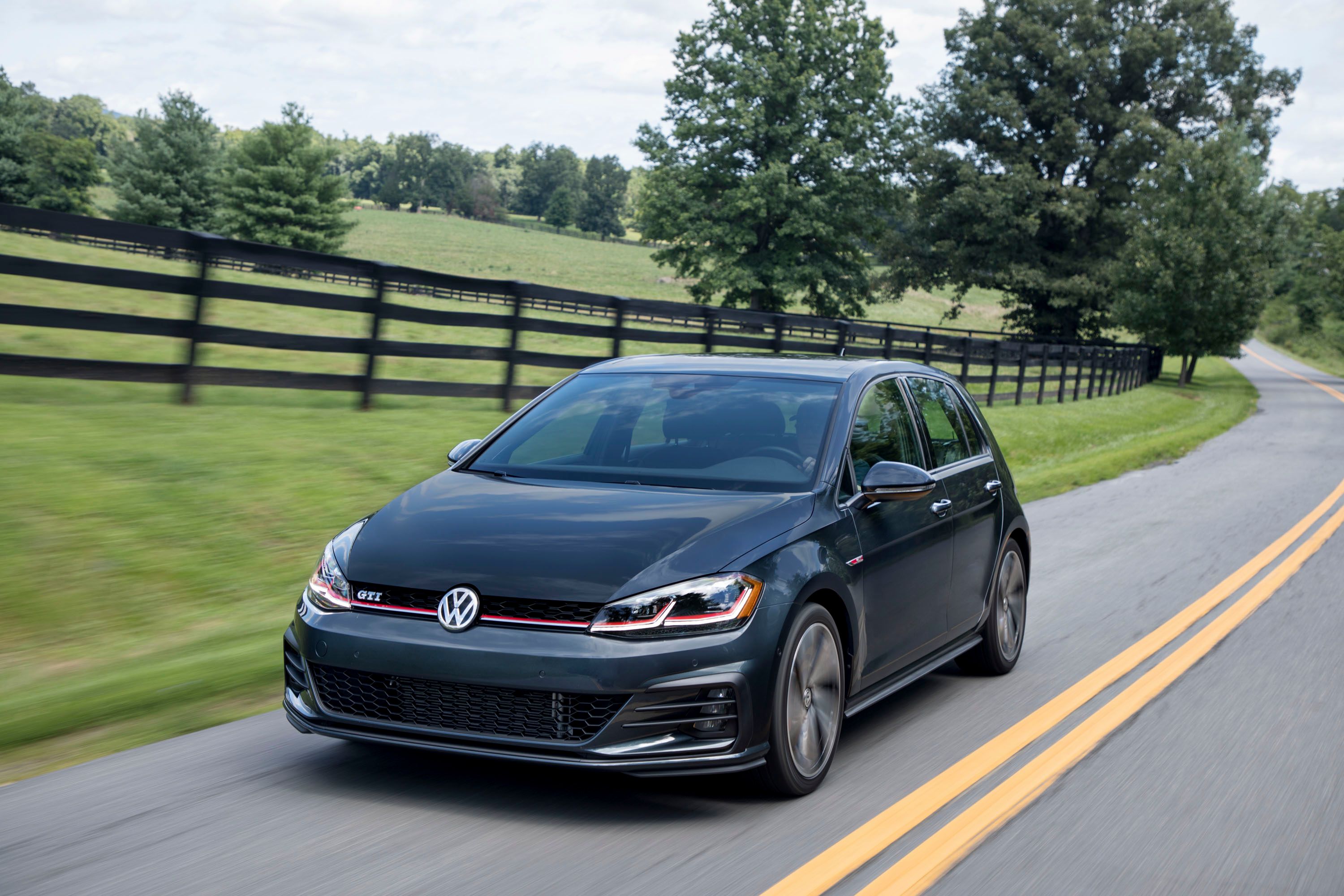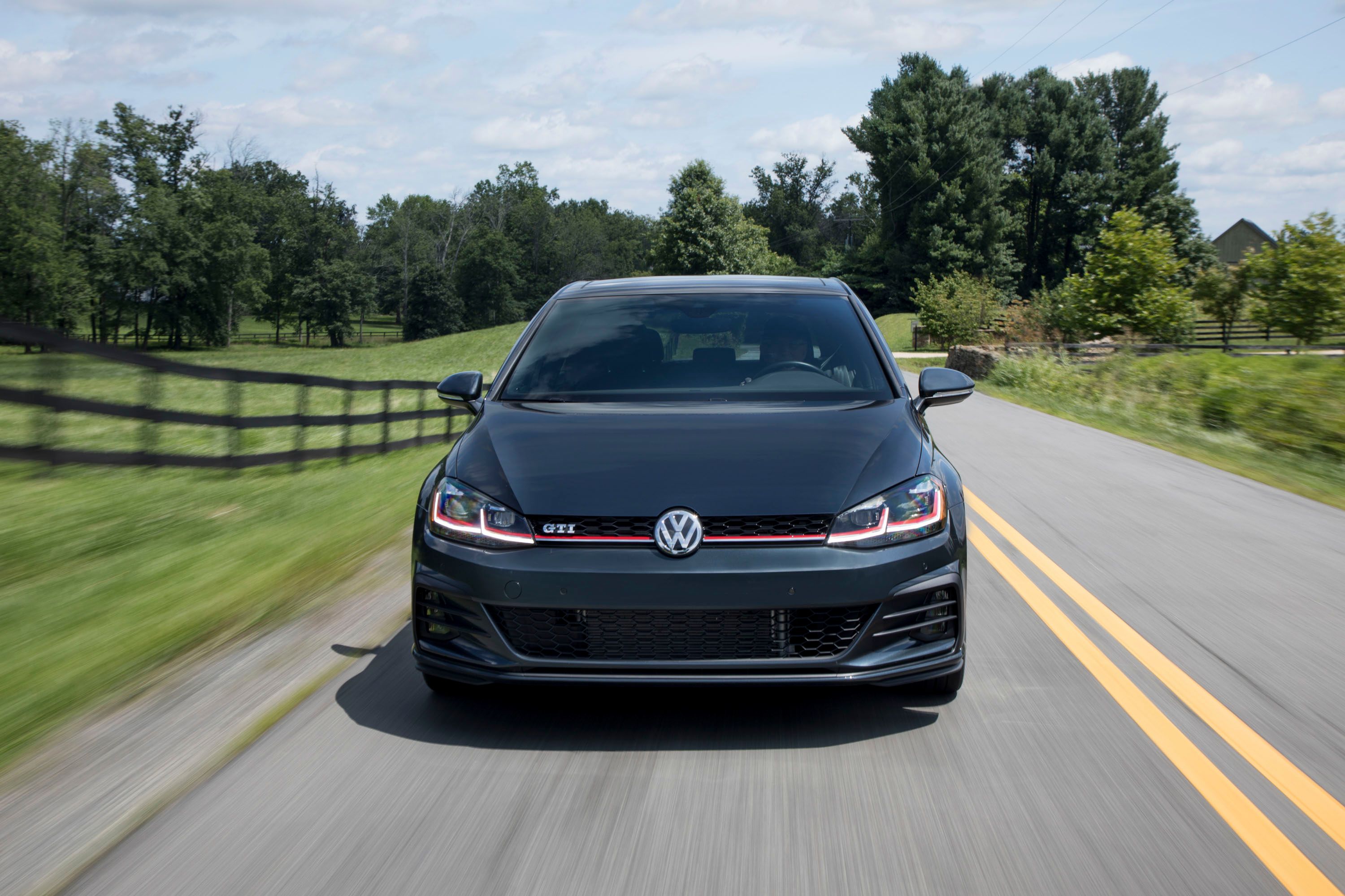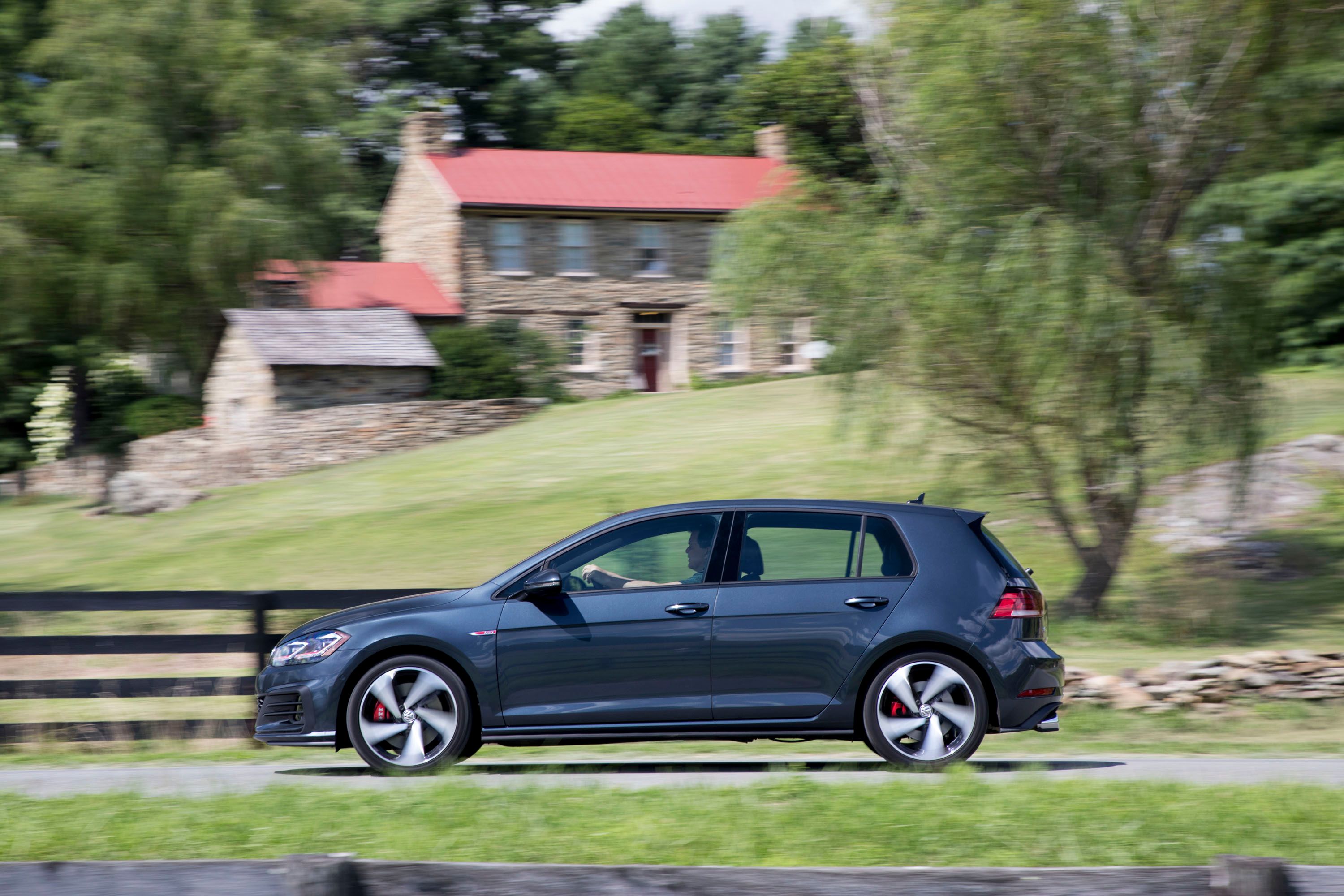Volkswagen first introduced the Golf way back in 1974. In the forty-two years that followed, the German manufacturer ushered in no less than seven individual generations, establishing the Golf as one of the most versatile compacts on the market. The Golf has been offered in a wide variety of body style, including wagons, two-door convertibles, five-door hatchbacks, and three-door hatchbacks, but the best of the bunch has traditionally been the hot-to-trot Golf GTI. Although the R eventually replaced the GTI as the fastest, most powerful Golf variant in the lineup, the GTI is still a nice blend of practicality and speed, offered in a upscale, premium-feeling package, both inside and out. Now, VW is introducing a mid-life refresh for the GTI’s 2017 model year, and with it comes tweaked styling and a few more ponies. However, the biggest upgrade is undoubtedly in the technology department, where infotainment and driver assistance features get a major boost across the board.
While not quite as liquid hot as the Honda Civic Type R or Ford Focus RS, it should still be remembered that the Golf GTI more or less established the whole hot hatch formula we know and love today. And while a new R variant is expected to take the fight to the H badge and the Blue Oval, the GTI marches on as a more sensible, yet still highly entertaining alternative.
With that in mind, it’s no surprise Volkswagen spent so much time refining the car’s technology. Read on to get the details.
Continue reading to learn more about the Volkswagen Golf GTI.
2017 Volkswagen Golf GTI
- Make: Array
- Model: 2017 Volkswagen Golf GTI
- [do not use] Vehicle Model: Array
Exterior
Like the rest of the Golf lineup, the new GTI gets a restyled exterior. Volkswagen added new bumpers and new front fenders, plus new intakes in the lower bumper for a little added visual width. The wheel designs were also refreshed, as were the exterior paint options. In front is a red stripe across the nose that connects the headlights and denotes the model as a GTI variant.
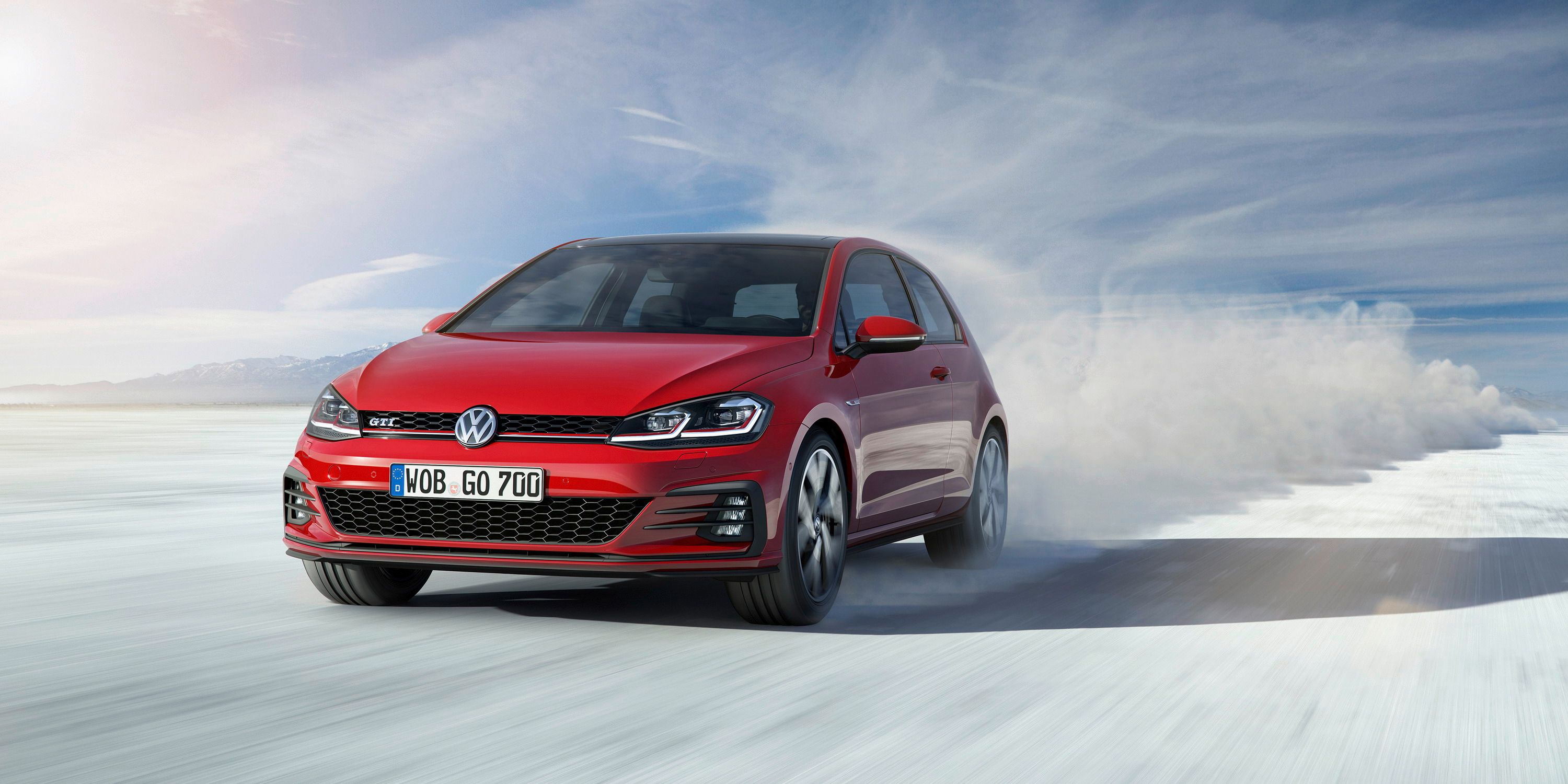
|
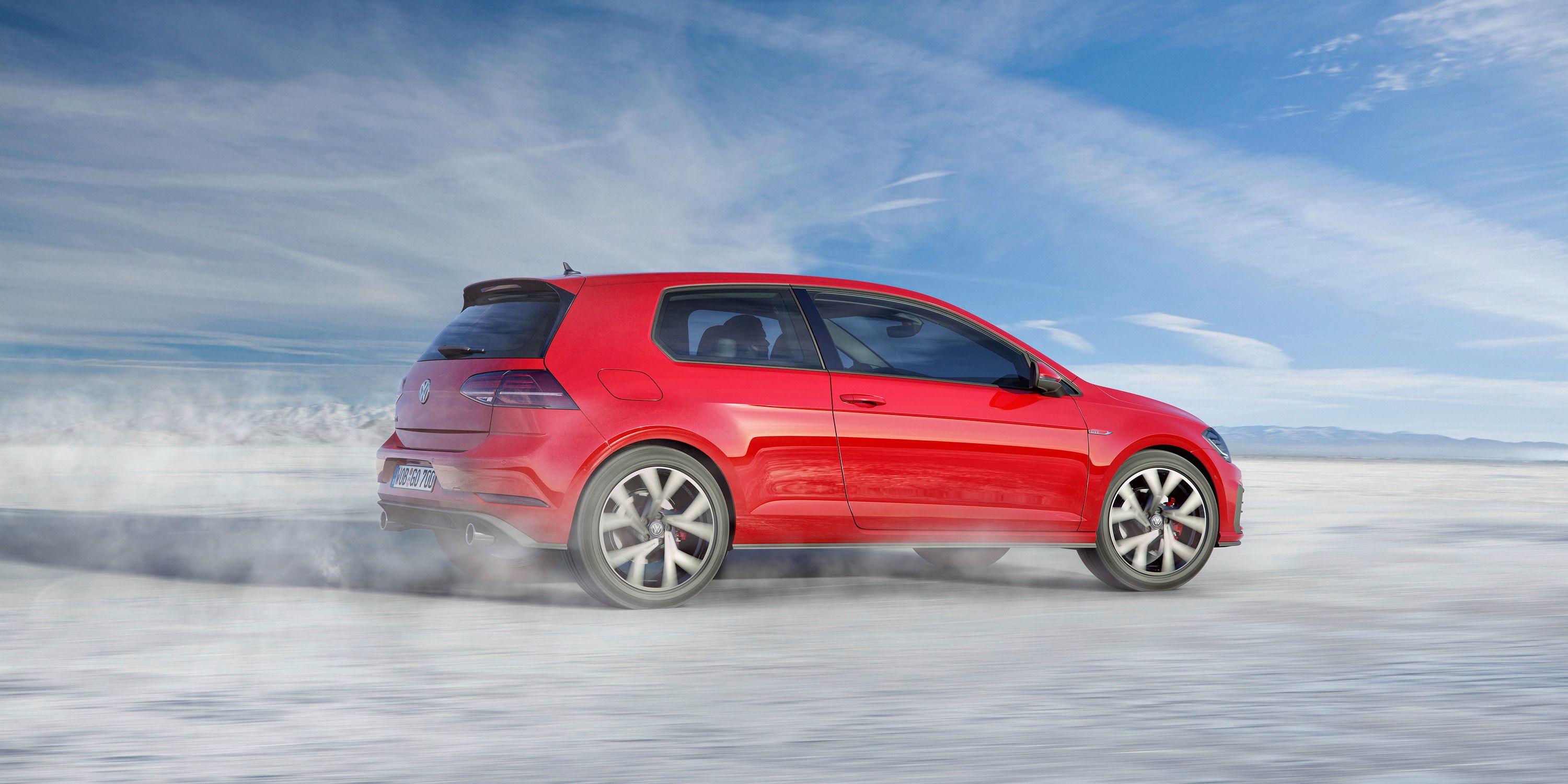
|
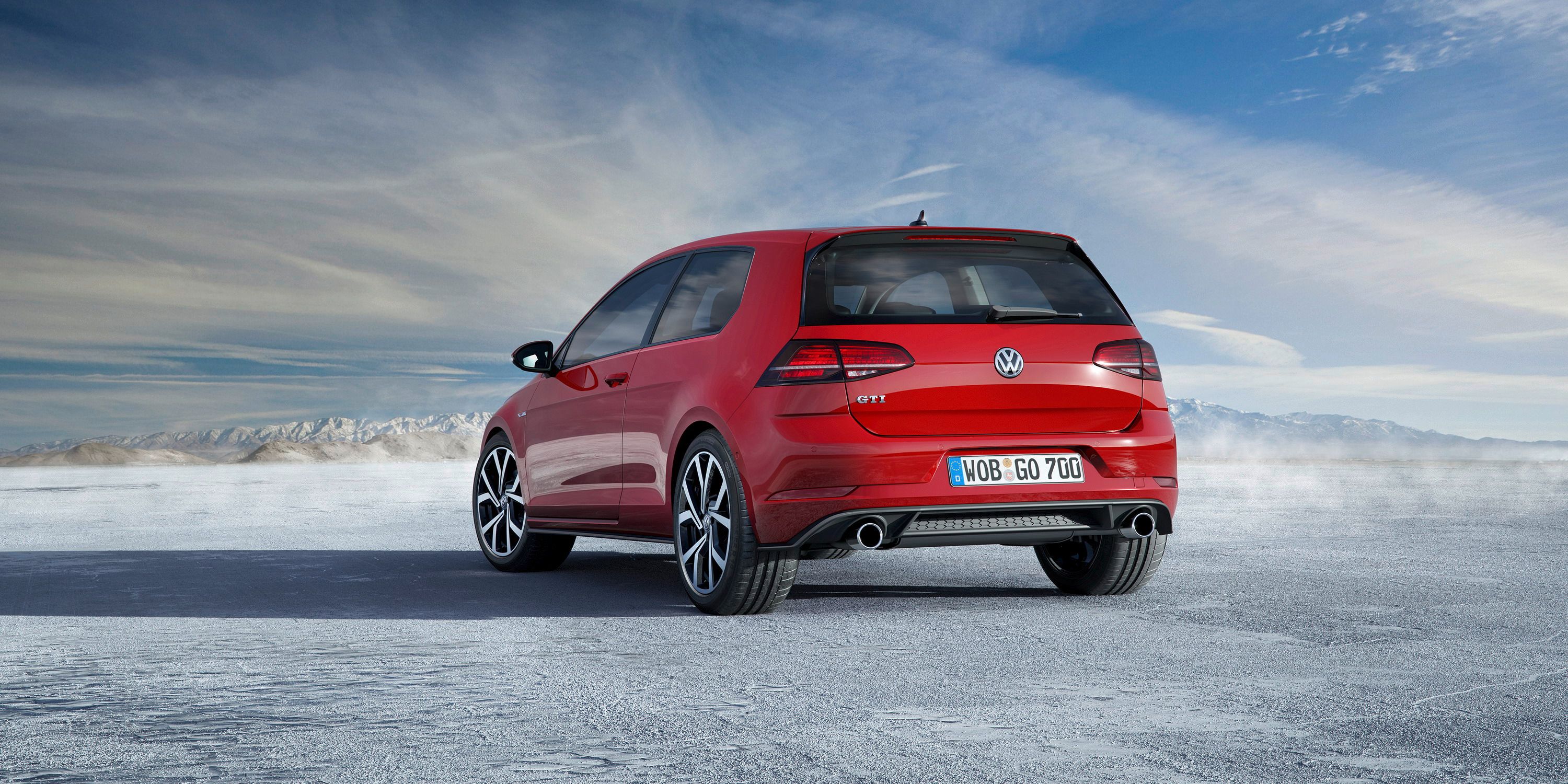
|
The taillights were also tweaked, with the lighting elements upgraded to modern tech. The taillights are now LEDs across the entire Golf range, while the headlights were redesigned with LED daytime running lights augmenting the stock halogen elements. The upgraded Xenon units were also replaced with optional LEDs. The GTI is finished with a uniquely larger lower rear section and chrome-plated exhaust pipes.
Additionally, models equipped with radar-based assistance systems (Adaptive Cruise Control, Front Assist, etc.) see the radar sensor moved behind the VW logo in the nose, hiding it away compared to its original position in the lower intake.
Competition
Compared to its rivals, the Golf GTI is still a bit understated. This has been the case for many VW products, with the car’s inherent sportiness hinted at, rather than shouted about. And to some people, that’s about right. If overt performance cues are more your thing, look higher in the segment, especially with the Ford Focus RS and Honda Civic Type R. But if you want something aggressive but not too boy racer-ish, the Golf GTI should fit the bill. The new updates give the hatch a wider, sporty look, without going overboard.
Interior
Volkswagen is adamant that the new Golf is jam packed with upgraded technology. The new design includes larger touchscreens, new features, and something the automaker calls an “increasingly digital display and control concept.”
Probably one of the more interesting upgrades is the integration of gesture control, a first for a production VW model. Drivers and passengers can operate various infotainment systems using mid-air swipe, flip, and scroll hand motion, eliminating the use of hard buttons and knobs. A “light flare” indicates which functions are controllable with gestures, and a successful swipe motion is accompanied with a sound effect.
VW is also adding something it calls an Active Info Display, a feature it undoubtedly pulled from Audi’s Virtual Cockpit.
Like the Audi system, Volkswagen’s Active Info Display integrates a 12.3-inch color display into the gauge cluster. Resolution is set at 1,440 x 540 pixels, and offers five individual “information profiles,” each of which is capable of displaying specific information and graphics. These profiles include: Classic, Consumption & Range, Efficiency, Performance & Driver Assistance, and Navigation (Navigation includes both 2D and 3D navigation info). The Active Info Display can also show telephone contact images and album art, and offers customizable graphics. For the GTI, red is used as a contrasting color.
It should be noted that the Active Info Display is an available extra, replacing the analog instrumentation if opted into.
The rest of the infotainment systems are replaced with VW’s next-gen MIB system, which includes larger touchscreens, as previously mentioned. Included is a 6.5-inch “Composition Touch” and “Composition Colour” system, replacing the old 5.0-inch display. These systems originally carried resolutions of 400 x 240 pixels, but now get a 800 by 480 pixel touchscreen. The black and white “Composition Touch” is no longer available.
Moving up, the “Composition Media” and “Discover Media” systems (including navigation) now have 8.0-inch screens, replacing the old 6.5-inch units. Resolution remains the same resolution 800 x 480 pixels.
At the top of the range is the “Discover Pro” system, which includes gesture control, and an uprated 9.2-inch screen. Resolution is increased to 1,280 x 640 pixels, and the screen gets a new glass surface for a more premium look. VW says the “Discover Pro” system integrates all of its haptic controls with the touchscreen, plus it uses capacitive panels on the left-hand side.
Users can configure the Discover Pro system with their own controls and a customized home screen. The system also incorporates an amplifier with 4 x 20 watt output, a DVD drive, two USB ports, two SD card slots, an auxiliary input jack, 10-GB SSD, music playback, movie player, jukebox, podcast player, proximity sensor, voice control, and navigation.
The various upgraded infotainment systems are expected to see use elsewhere in the VW stable next year.
Further features include pairing with an external antenna for better reception, as well as Qi inductive charging. You can also use the Wi-Fi hotspot to turn your mobile device or tablet into a media control panel, offering authentic rear seat entertainment control options.
There are also individualized settings identified using the key fob that can automatically adjust the seating position, ambient lighting, drivers assist systems, infotainment settings, climate control, display settings, and more.
Options include a rear view camera, DAB+, two extra USB ports, and two mobile phone interfaces.
The 2017 model year also brings new trims and fabrics, seen in the doors, dash panel, center console, and seat covers.
And since this is the GTI, red is the color choice du jour.
Competition
Like the exterior, the GTI’s interior gets the job done with simplicity and a sense of premium application. Compared to its rivals, the VW isn’t as wild, but the materials, fit and finish should all feel much better than the Ford Focus ST. And while it’s not quite as funky as the Mini, it’s still a nice place to rest your backside.
Drivetrain
Lower trim levels of the Golf get a new 1.5-liter engine for motivation, but the 2017 GTI continues on with the same 2.0-liter four-cylinder as before. However, with the new model year, VW saw fit to bless the GTI with a bit more power than before, boosting the turbocharged four-banger to 227 horsepower, a 10-horsepower gain over the previous model. Equip the Performance package, and peak power rises to 242 horsepower.
Routing the output to the front axle is a new seven-speed dual-clutch transmission, which is set to replace the old six-speed dual-clutch unit currently in use, helping VW cut down on emissions. The GTI’s six-speed manual transmission is presumed to be a carryover.
All said and done, the new Golf should manage to hit 60 mph in the high-to-mid-five-second range, with top speed pegged at around 130 mph.
|
Volkswagen Golf GTI |
Ford Focus ST |
Mini Cooper JCW |
|
|
Engine |
2.0-liter four-cylinder |
2.0-liter EcoBoost engine |
2.0-liter, four-cylinder |
|
Horsepower |
227 HP (242 HP with Performance Package) |
252 HP |
228 HP |
|
Transmission |
seven-speed dual-clutch |
six-speed manual |
six-speed manual |
|
0 to 60 mph |
5.5 seconds |
5.9 seconds |
6.1 seconds |
|
Top Speed |
130 mph |
154 mph |
153 mph |
Safety And Convenience
Along with the new interior technology, the GTI gets all kinds of new semi-autonomous assistance systems, including City Emergency Braking with Pedestrian Monitoring function, which can identify crossing pedestrians and will automatically apply the brakes if a potential collision is detected, and Traffic Jam Assist, which applies the brakes and throttle for automatic driving up to 60 km/h, or 37 mph.
For 2017, VW is offering the Security and Service package for the first time on the Golf, which includes “Automatic Accident Notification,” “Breakdown Call,” and “Service Scheduling.” You can also keep tabs on the status of your doors and lights, and pinpoint your parking position if you misplace your car.
There’s also Area Alert, which will notify you when the Golf is taken outside or into a specifically designated area, plus Speed Alert, which will send a notification when the car is driven over a certain speed. Finally, there’s Anti-Theft Alarm, which will notify you when someone tries to break into your car.
These systems join the rest of the Golf’s tech package, which includes Adaptive Cruise Control, Front Assist with City Emergency Braking System, Lane Assist, Blind Spot Sensor, Rear Traffic Alert, Park Assist, Driver Alert System, reversing camera, traffic sign recognition, Automatic Post-Collision Braking System, and trailer stabilization. More information on these systems can be found in the press release below.
If all those various systems can’t prevent a collision, the Golf GTI is still considered quite safe. The NHTSA has awarded the 2017 model with a five-star rating overall, with four stars for frontal crashes, five stars for side impacts, and four stars for rollovers. Meanwhile, the IIHS awarded the 2016 Golf GTI four-door with its Top Safety Pick+ award, rating it with a top “Good” score in every category.
Prices
The 2017 Golf GTI starts at $24,995, with upgraded infotainment, safety systems, and the Performance Package all adding to the bottom line.
Competition
Ford Focus ST
Like the GTI, the Focus ST represents Ford’s penultimate stop in the hot hatch lineup, slotting in below the over-the-top, 350-horsepower AWD Focus RS. The ST looks good though, offering nice styling, nippy handling, and a decent amount of punch for the money. If you value horsepower over interior amenities, this is the one to look at.
Read the full review here.
Mini Cooper Hardtop S/JCW
The Mini Hardtop is the closest to the original formula, with fun handling and a ton of style. In fact, this Mini will turn heads no matter where you go, unlike the blend-in-the-crowd VW. If you wanna stand out, look into picking up the Mini.
Read the full review here.
Conclusion
The Golf is VW’s most successful model ever produced, with over 33 million units sold since it first went on sale in the ‘70s. The GTI is arguably the most important model in the nameplate’s history, at least amongst gearheads, as it set the standard by which all future hot hatchbacks have been judged.
But now, with hatchback performance extending into sports car (and even supercar) territory, the GTI feels a little bit lost in the wake. But while it’s no longer the performance standard, it still gets that time-tested blend of practicality and fun it’s been known for. As for the technology, well, that’s just icing on the cake.

